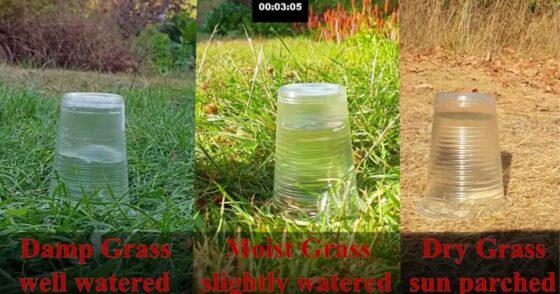
After such an intense and long heatwave, we tell ourselves that a good series of storms would not hurt anyone and that it would be the fastest and most effective way to restore water in a country that really needs it. Unfortunately, the reality is far from that simple. To be convinced of this, it is best to take a look at this experience, which is as concrete as it is constructive.
In fact, the more a soil has become dry and hard from the heat, the more difficult it is to absorb the water that falls on it. To illustrate this phenomenon, Dr Rob Thomspn of the University of Reading (UK) used three glasses of water that he spilled on three different grounds: the first was covered with lush grass, the second had had a “normal” summer and the third dried up by a heat wave.
The result ? Here it is :
In the first case, the water was absorbed in just ten seconds. In the second case, it took 53 seconds. And in the third case, even after four minutes, only a few drops had infiltrated the ground… A situation that evokes fear of a phenomenon that is both well-known and dangerous: flooding.
Secure Twitterexplains the University of Reading:
” With this experiment, Dr Rob Thompson of the University of Reading shows how long it takes for water to seep through dried-out soil, illustrating why heavy rainfall after a long dry spell can be dangerous and cause flash flooding. »
In other words, the showers that will follow the current heat wave are likely to run to the ground rather than penetrating deep into it.
Quoted by HuffPostTristam Amm, forecaster at Météo France, is well aware of the risk:
“We want to avoid too heavy rainfall to avoid the risk of runoff. We prefer disturbances with standing rains over several weeks to moisten the soil.”